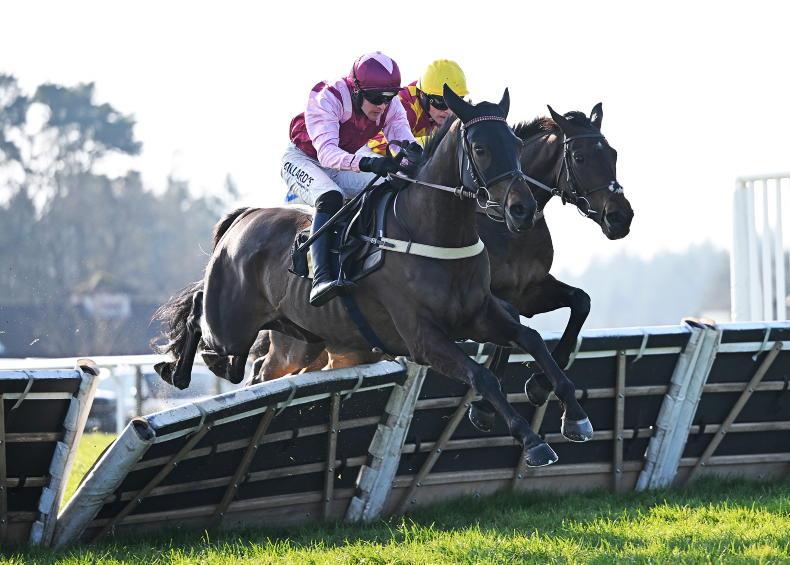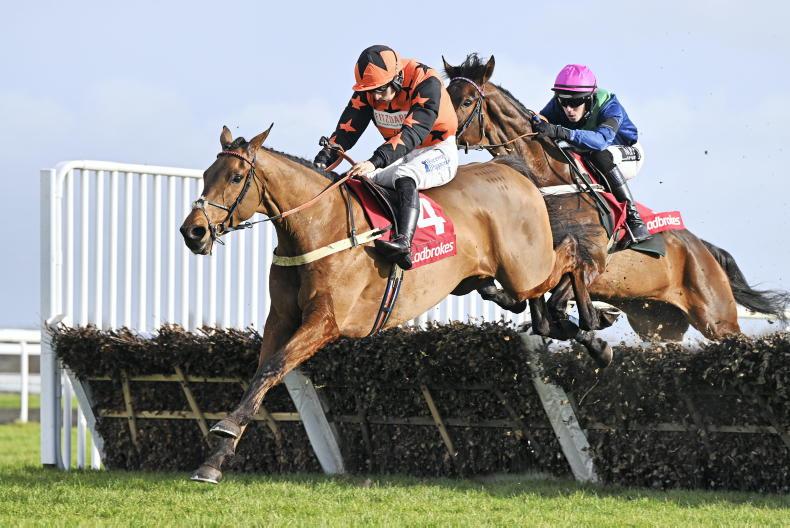AS spring makes its tentative approach, the flat season is slowly springing into life to sit alongside the remainder of the jumps season which has Punchestown and Aintree on the horizon.
There have already been some noteworthy performances on the flat from horses who look sure to make a bigger impact as the season gathers momentum and I will focus on what they achieved in terms of the data produced and assess their potential going forward.
Paddy Twomey has had just three runners in 2024, two of which have won. This is typical of his growing reputation for being able to find the right races for his team. A glance at his strike rate over the last few years highlights his talent. His strike rate in 2021 was 30%, it was 29% in 2022 and 28% last year.
Such numbers are not achieved by a scatter gun approach, they are born out of shrewd placing and career management. With that in mind we can be sure that he will find the right path for his exciting filly Purple Lily who is unbeaten in two starts and who won impressively at Naas on Sunday.
Lily looks really promising
This was a strong contest with the runner-up Portland setting the standard having attained a rating of 108 courtesy of a good two-year-old campaign that concluded with a third place in the Group 1 Critérium International at Saint-Cloud. However he was no match for Purple Lily who surged clear to beat him by three lengths.
In the heavy conditions this was an evenly run race courtesy of Portland who led until headed by the winner two furlongs out. Paddy Twomey’s filly recorded a Finishing Speed Percentage (FSP) of 100.70% suggesting that rather than quickening sharply she kept on strongly all the way to the line. That she could maintain her speed in the conditions was impressive because none of her rivals could, they all recorded an FSP under 100% telling us that all bar her were weakening through the final two furlongs.
A closer look at her sectionals shows us that she won the race in the sixth and seventh furlongs where she quickened better than her rivals. She recorded 13.71secs for the fifth furlong, but then quickened to record 12.85secs in the sixth furlong and 12.85secs in the seventh furlong. That surge was too much for Portland. A comparison of their final three furlongs are below.
Purple Lily: 12.85secs/12.85secs/14.84secs
Portland:13.20secs/13.37secs/15.22secs
Purple Lily was 1.25secs quicker than Portland in those final three furlongs which in the conditions is equivalent to approximately six lengths.
She saw this mile trip out well without being able to show the speed she did at Galway on debut. On that occasion she reached a maximum speed of 37.77mph compared to 35.63mph on this occasion. The discrepancy is a function of the conditions and an indication that there is plenty more to come from her.
When interviewed on Racing TV Twomey suggested that a Guineas trial and possibly the Irish 1000 Guineas is the route that she may take.
Brazen speed on show
from Night Raider
From a potential Irish 1000 Guineas contender to a colt who is taking an unconventional route to the 2000 Guineas at Newmarket. Night Raider is unbeaten in two starts at Southwell over seven furlongs and on both occasions impressed with his high cruising speed. He is a fast horse as indicated by the data he has produced so far, and his connections are keen on having a tilt at the Guineas.
Last Wednesday week he made all the running and was allowed a solo out in front. His FSP of 107.66% tells us that he ran the final two furlongs 7.66% quicker than he ran the previous five. Such a fast finish was enabled by him saving energy in the early part of the race before quickening through the final three.
His sectionals show that he was able to dictate matters at a steady early tempo. His second, third and fourth furlongs were recorded by Race IQ at 12.75secs, 12.29secs and 12.19secs. Then he quickened, with the next three furlongs much faster at 11.30secs, 10.98secs, 11.84secs. He reached a top speed of 41.74mph with that 10.98secs furlong highlighting that he is a horse with a tremendous amount of speed.
This was a display of brazen speed from this son of Dark Angel, and it strikes me that he may be a Commonwealth Cup horse rather than a Guineas horse. This win does not afford us any clues as to whether he would stay a strongly run mile. His sire was a sprinter and his dam stayed seven furlongs which is not encouraging as far as the 2000 Guineas is concerned, but if he were as effective at a mile on turf his sharp turn of foot will be a potent weapon.
Montaasib toughs it out
to take Cammidge Trophy
In terms of data analysis, the Cammidge Trophy and the Lincoln stood out as interesting contests for different reasons. Montaasib is now established as being at his best over six furlongs with some cut in the ground. He has won three of his four races over this trip and top class sprint races await.
Very soft conditions ensured that no horse in the race was able to break the 12.00secs barrier for any individual furlong. Montaasib was held up in last place before weaving through and finishing his race off better than his rivals. He ran the final two furlongs 3.51% quicker than the previous four. In recording a final furlong of 12.75secs he was the only horse to dip under 13.00secs and his final two furlongs recorded at 24.81secs was 0.32secs faster than the runner-up Marshman.
In essence Montaasib saved petrol in the early part of the race before finishing better than his rivals. A note should be made of Marshman (second) who was fastest in the penultimate furlong recording a split of 12.03secs compared to 12.06secs from the winner. He could not sustain his surge and weakened in the final furlong. A return to five furlongs may suit him.
Professor is best in a slow motion finish
The remarkable thing about the Lincoln was how strongly run it was in the face of a strong headwind. The first six horses home all raced to the rear of midfield yet none of them finished strongly. In recording an FSP of 94.19%, Mr Professor won despite running the final two furlongs 5.81% slower than the previous six. It was a slow-motion finish with the winner able to get the job done with a slow final furlong of 14.09secs. It has been suggested that he quickened up from the back of the field, but the data suggests he simply kept going better than his rivals in a race that was attritional. Lattam in second should be noted; he finished stronger than the winner, doing his final two furlongs in 26.89secs (27.06secs for Mr Professor).


 This is a subscriber-only article
This is a subscriber-only article
 It looks like you're browsing in private mode
It looks like you're browsing in private mode











SHARING OPTIONS: